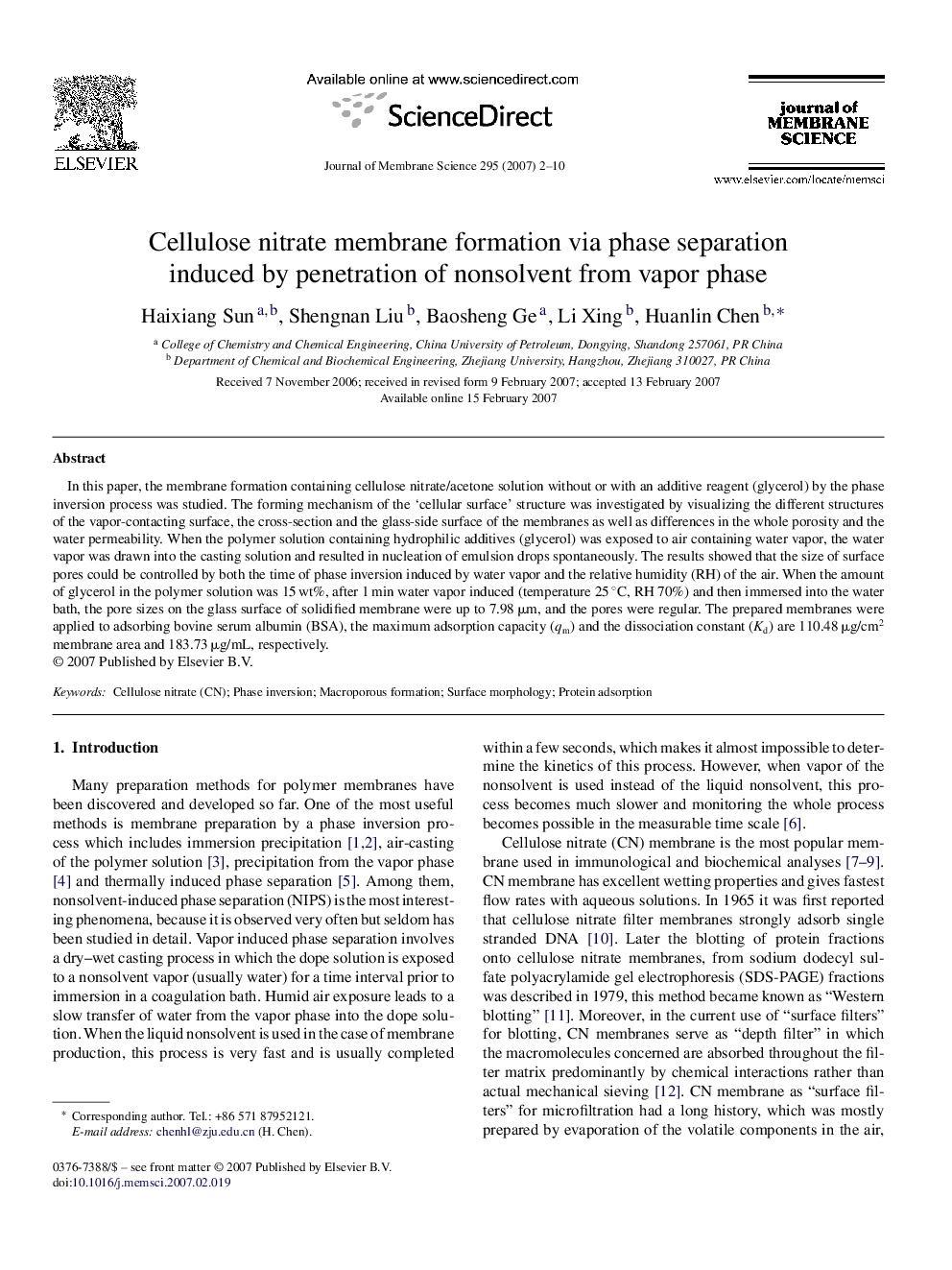| Article ID | Journal | Published Year | Pages | File Type |
|---|---|---|---|---|
| 638666 | Journal of Membrane Science | 2007 | 9 Pages |
In this paper, the membrane formation containing cellulose nitrate/acetone solution without or with an additive reagent (glycerol) by the phase inversion process was studied. The forming mechanism of the ‘cellular surface’ structure was investigated by visualizing the different structures of the vapor-contacting surface, the cross-section and the glass-side surface of the membranes as well as differences in the whole porosity and the water permeability. When the polymer solution containing hydrophilic additives (glycerol) was exposed to air containing water vapor, the water vapor was drawn into the casting solution and resulted in nucleation of emulsion drops spontaneously. The results showed that the size of surface pores could be controlled by both the time of phase inversion induced by water vapor and the relative humidity (RH) of the air. When the amount of glycerol in the polymer solution was 15 wt%, after 1 min water vapor induced (temperature 25 °C, RH 70%) and then immersed into the water bath, the pore sizes on the glass surface of solidified membrane were up to 7.98 μm, and the pores were regular. The prepared membranes were applied to adsorbing bovine serum albumin (BSA), the maximum adsorption capacity (qm) and the dissociation constant (Kd) are 110.48 μg/cm2 membrane area and 183.73 μg/mL, respectively.
